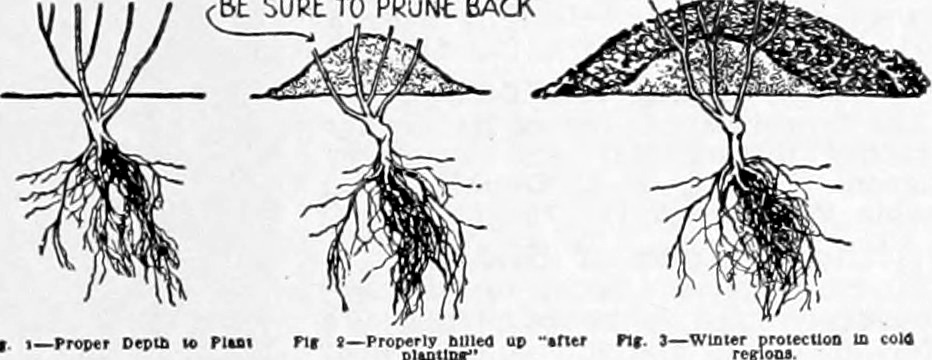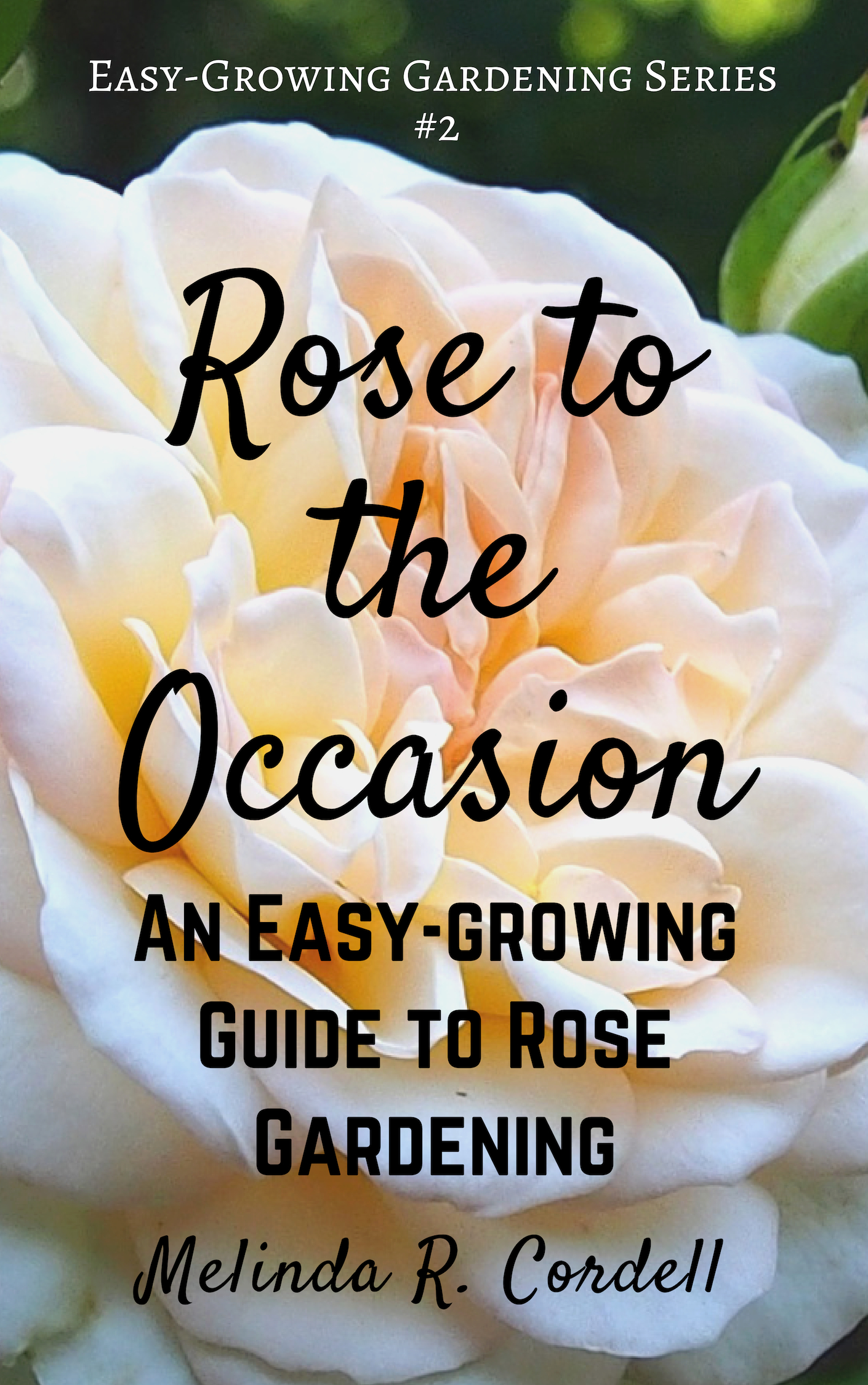If you can’t plant your roses immediately, put them in a container filled with moist peat moss. Be sure the roots are well-covered, and keep the container in a cool, shaded location.
You can also heel in your roses in a hole or trench in the ground.
If you’re replacing a rose that has been planted in the same spot for over ten years, plant the rose elsewhere, or replace the soil before planting. Places that have grown roses for many years are prone to a malady called “sick soil.” Roses stop flourishing in that soil, mainly (it is thought) because pests and diseases have accumulated in the soil.
Also, if you have what I call “subdivision soil” – a dense, compacted soil created by heavy machinery churning up subsoil during construction – you will have to dig out all that lousy soil or create raised beds before you plant roses.
Now, prepare the soil. Be sure to get all the weeds out. Mark where you want the roses to go in, giving each rose three feet of space – and take into consideration how wide your rosebush will actually get!

How to dig a hole
About 24 hours before you’re ready to plant, fill a five-gallon bucket with water. Add a splash of bleach (1/8 cup to a five-gallon bucket) to the water to clean up any bacteria. Pour in a cup of root stimulant, and put your bare-root roses in. Let them sit in the water until you plant them.
Protip: Before you dig, lay a tarp down next to the hole. Put all your dug-up soil here. When you’ve finished planting your rose and used the excess soil to make a saucer around the rose, pick up the tarp – and the ground where you were digging is just as clean as can be.
While the rose is soaking in its bucket, prepare a great hole to plant the rose in. This part is very important, because a quality hole will grow a quality rose.
Dig a generous hole that’s about two feet wide and 18 inches deep. Take out part of that soil, then mix in compost and peat moss (or other organic matter); add fertilizers such as Osmocote, bone meal, blood meal, or Bradfield – about a cup of any of these. Also, add soil amendments such as perlite, peat moss, well-rotted or composted manure, compost, kelp meal, greensand, or whatever good amendments you have available.
The soil amendments you add don’t have to be scientifically balanced. Many times I simply use what I have at hand. “Well, here’s a half-bale of peat moss, so I’ll divide that among these six rose holes. Here’s some Bradfield – let’s give ‘em a cup each. I have two buckets of compost from the landfill, we’ll dump a little into each hole. Shoot, I have only two cups of bone meal for six roses, but I’m not going to waste half the morning running to the store. Split it up. Something’s better than nothing. Okay, that looks good, let’s grab the shovel and mix it all in with the soil in the holes. Maybe I’ll even get this part of the job done by lunchtime.” (Looks at watch.) “Or not.”
What you want (technically, what your plant wants) is to have plenty of organic material, a light and crumbly soil, and plentiful nutrients. Nature is not scientifically precise about soil building, but she balances it all out in the end.
When you are ready to plant, take your roses out of the water they’re soaking in, put them in a garbage sack to keep the roots from drying out, and bring them to the planting site. Also bring your shovel, your soil amendments, a tarp, and the garden hose.
Make a cone of soil in the middle of the hole. The cone should come up under the roots and support the rose.
Now, lay your shovel handle across the top of the hole – this will show you where soil level will be once the rose is planted. When you set your rose on the cone, the bud union of the rose – that big knob that connects the canes with the roots – should sit three to five inches below the shovel handle. Adjust the height of the cone until the bud union is the right height.
Fill in the rest of the soil and firm it around the bush. Use the extra soil to make a saucer around the rose – this saucer will keep the water and mulch from running off.
Gently build a mound of soil over the top six inches of the rose canes, or even higher to protect the rose canes from drying out. Once the weather warms up, you can wash away this soil a little at a time. Cut back the canes that are sticking out of the mulch so they don’t pull moisture out of the rose.

1) Proper depth to plant. 2) Properly hilled up after planting. 3) Winter protection in cold regions.
If you buy a rose that’s had its canes dipped in wax, remember that the wax acts as an anti-desiccant, and keeps the canes from drying out when in transit, or when sitting around in a store waiting to be bought. Wax also good to have on the rose when the weather is too cold for foliage to grow. However, the wax needs to be off by March to allow the buds to grow. You can flake the wax off the end of the cane, or scrub it with a toothbrush (obviously, don’t brush your teeth with this later). Or, you can simply pour warm water over the rose to melt off enough wax to help the rose along. Once you’re done, cover the exposed canes in mulch or soil, or spray them with an anti-desiccant like Wilt-Pruf to keep valuable moisture from escaping.


